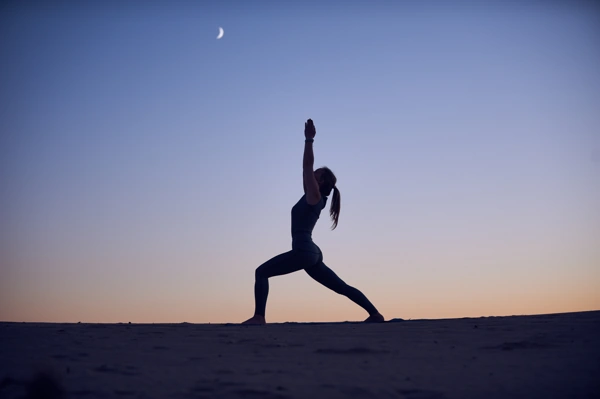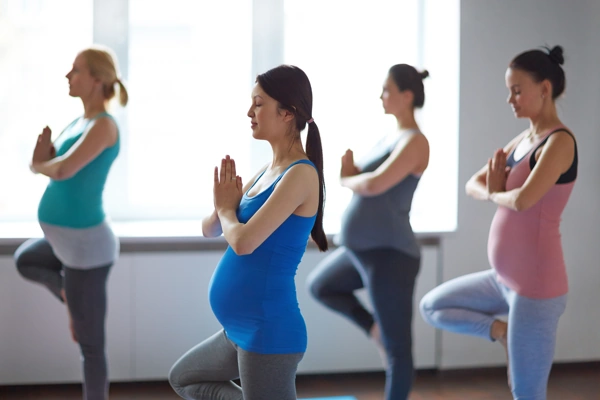Pregnancy is a life-changing experience, filled with excitement and anticipation, but it can also come with its share of discomforts, anxieties, and physical challenges.
Yoga, an ancient practice of physical postures, breathing techniques, and meditation, can help pregnant women address these challenges and experience a healthier, more fulfilling pregnancy.
In this article, we will explore the benefits of yoga, including the safest and most effective yoga poses during pregnancy, the best yoga poses for each trimester, and tips for practicing yoga safely and comfortably.
The Physical Benefits of Yoga during Pregnancy
Yoga during pregnancy can help women maintain physical fitness, manage stress and anxiety, and relieve common discomforts such as back pain, nausea, and fatigue. The following are some of the physical benefits of practicing yoga during pregnancy:
- Strengthens and tones muscles: Prenatal yoga focuses on strengthening the muscles used during childbirth, such as the pelvic floor, abs, and lower back. This can help prepare the body for labor and delivery and prevent common prenatal discomforts such as back pain and incontinence.
- Increases flexibility and balance: Prenatal yoga can help improve balance, flexibility, and coordination, which are all important for a healthy pregnancy. As the body changes, many women feel clumsier and less steady on their feet, but yoga can help with this.
- Relieves stress and tension: Yoga promotes relaxation and reduces stress and tension in the body. This can help expectant mothers feel more relaxed, calm, and focused, and can also help relieve physical symptoms such as headaches, nausea, and fatigue.
- Improves sleep: Yoga has been shown to improve sleep quality, and many pregnant women report sleeping better after practicing yoga.

The Mental and Emotional Benefits of Yoga during Pregnancy
In addition to the physical benefits, yoga can also help women experience a more fulfilling and peaceful pregnancy by addressing the emotional and mental challenges that often arise during this time.
The following are some of the mental and emotional benefits of practicing yoga during pregnancy:
- Reduces anxiety and depression: Prenatal yoga can help women manage stress, anxiety, and depression by promoting relaxation and reducing negative thoughts and emotions.
- Increases body awareness: Yoga can help women become more aware of their bodies and the changes they are experiencing during pregnancy. This increased body awareness can lead to greater confidence and a sense of control during labor and delivery.
- Enhances self-esteem and confidence: Practicing yoga during pregnancy can help women feel more confident and empowered, and can also help boost self-esteem and body image.
- Promotes bonding with baby: Yoga can also provide a space for women to connect with their babies and prepare for the journey of motherhood. This can be an emotional and transformative experience that helps women feel more connected to their babies and more confident as parents.
The Best Yoga Poses for Each Trimester
It is important to choose yoga poses that are safe and appropriate for each trimester of pregnancy.
During the first trimester, women may feel fatigued and experience nausea, and it is best to practice gentle, restorative yoga poses that promote relaxation and comfort.
During the second trimester, women have more energy and stability, and can begin to incorporate more active yoga poses that help strengthen and tone the muscles used during childbirth.
During the third trimester, women may experience more physical discomforts and
it is best to stick with gentle, supportive poses that help relieve these discomforts and prepare the body for labor and delivery.
First Trimester Yoga Poses
Child’s Pose
Kneel on the floor with your knees hip-width apart and your big toes touching. Lower your torso down to the floor and reach your arms forward, stretching out your arms and relaxing your forehead to the floor.
Cat-Cow Pose
Begin on your hands and knees with your wrists under your shoulders and your knees under your hips. As you inhale, arch your back and lift your tailbone and chin to the sky, and as you exhale, round your spine and tuck your chin to your chest.
Cobra Pose
Lie on your belly with your palms under your shoulders, fingers pointing forward. As you inhale, press into your palms and lift your chest, lifting your gaze to the sky.
Second Trimester Yoga Poses
Downward-Facing Dog
Begin on your hands and knees with your wrists under your shoulders and your knees under your hips. Lift your hips up and back, straightening your arms and legs, and pressing your hands and feet into the floor.
Warrior II Pose
Stand with your feet hip-width apart, turn your right foot out 90 degrees, and bend your right knee. Reach your arms out to the sides, one in front of you and one behind you.
Triangle Pose
Stand with your feet hip-width apart, turn your right foot out 90 degrees, and reach your right hand down to your ankle. Reach your left arm up to the sky, stretching your right side.
Third Trimester Yoga Poses
Pigeon Pose
Begin on your hands and knees, and bring your right knee forward to the right of your right wrist, and your right foot to the left of your left wrist. Lower your torso down to the floor and reach your arms forward.
Butterfly Pose
Sit on the floor with the soles of your feet touching and your knees bent, and bring the soles of your feet together. Use your elbows to press your knees down towards the floor.
Squat Pose
Stand with your feet hip-width apart and your toes turned out, and lower your hips down towards the floor as if you were sitting in a chair. Place your hands on your hips for support.
Precautions and Tips for Practicing Yoga during Pregnancy
It is important to practice yoga during pregnancy with caution, taking into account any physical or medical restrictions, and avoiding poses that are not safe for pregnant women.
The following are some precautions and tips for practicing yoga during pregnancy:
- Listen to your body: Pregnancy can be an unpredictable time, and it is important to listen to your body and avoid pushing yourself too hard. If you feel uncomfortable or in pain, stop the pose and try something more gentle.
- Avoid deep twists, inversions, and backbends: During pregnancy, it is best to avoid deep twists, inversions, and backbends, as these can compress the uterus and be harmful to the baby.
- Wear comfortable clothing: Wear comfortable, supportive clothing that allows you to move freely and feel confident and relaxed.
- Stay hydrated: Stay hydrated before and after your yoga practice, and be sure to drink plenty of water throughout the day.
- Talk to your doctor: If you have any medical conditions or concerns about practicing yoga during pregnancy, talk to your doctor before starting a yoga routine.
Conclusion
Yoga during pregnancy is a safe and effective way to support the physical and emotional changes of pregnancy, relieve stress and tension, and prepare the body for labor and delivery. Yoga during pregnancy can even help with your sleep quality.
With caution and a focus on gentle, supportive poses, expectant mothers can experience the many benefits of yoga and promote overall physical and emotional well-being during this exciting and transformative time.
So, whether you are a seasoned yoga practitioner or just starting out, consider incorporating yoga into your prenatal care routine and enjoy the many benefits of this ancient practice during this special time in your life.






